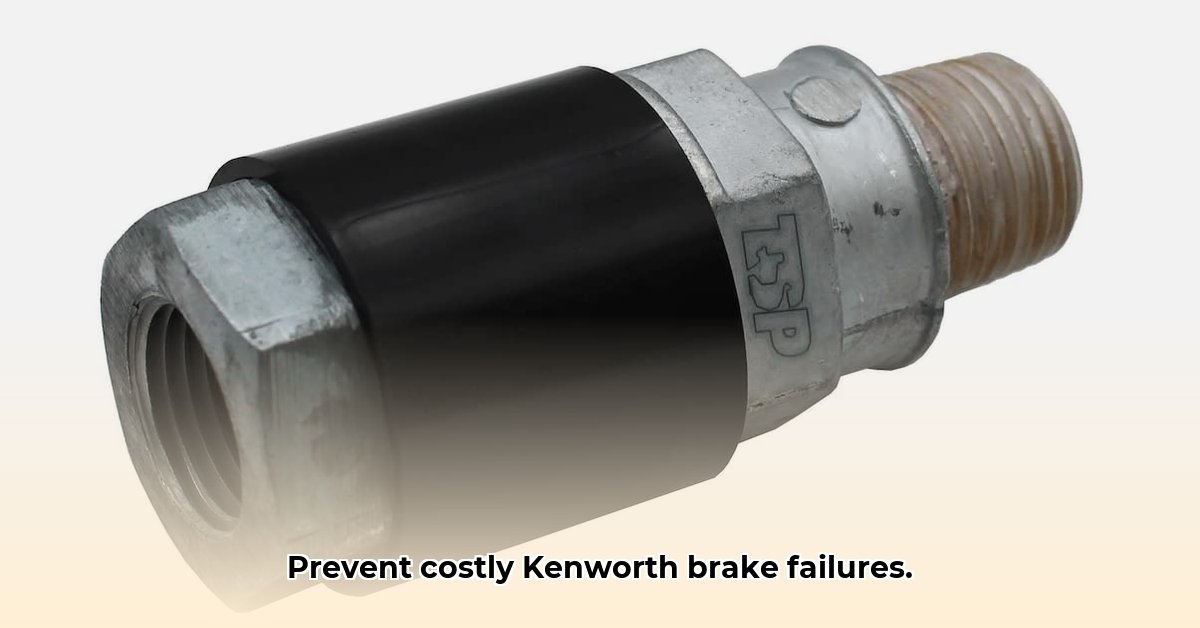
Understanding Your Kenworth Tractor Protection Valve (TPV): A Critical Safety Component
Kenworth tractor protection valves (TPVs) are essential safety devices designed to prevent catastrophic brake failures in your vehicle. They act as a crucial backup system, isolating the trailer brakes in the event of an unexpected trailer disconnection or a significant air leak. This guide provides clear, step-by-step instructions on selecting, installing, maintaining, and troubleshooting your TPV, ensuring optimal performance and regulatory compliance. Ignoring TPV maintenance puts your safety and that of others on the road at serious risk. A properly functioning TPV is a critical part of a safe and efficient operation. For more in-depth information, check out this TPV resource.
Types of Kenworth Tractor Protection Valves: Ensuring Compatibility
Choosing the correct TPV is paramount. Improper selection can lead to brake failure. Several TPV models exist, each designed for specific Kenworth truck models and air systems. Always consult your Kenworth owner's manual or your local Kenworth dealer to determine the correct TPV part number for your specific vehicle. Using an incorrect TPV is a serious safety hazard.
Here's a sample table illustrating potential compatibility (this is for illustrative purposes only – always verify with your owner's manual or Kenworth dealer):
| Kenworth Model | Compatible TPV Part Numbers | Notes |
|---|---|---|
| T800 | 12345, 67890 | Verify compatibility with your specific T800 model year and configuration. |
| T680 | 90123, 34567 | Contact your Kenworth dealer for the most up-to-date part number information. |
| W900 | 78901, 12346 | Check your truck's maintenance records for previously installed TPVs. |
Installing Your Kenworth Tractor Protection Valve: A Detailed Procedure
TPV installation requires precision and care. If you're not comfortable working on your truck's braking system, consult a qualified Kenworth mechanic. Improper installation can severely compromise safety. Always refer to your specific TPV's installation instructions for detailed steps and safety warnings.
Step 1: Preparation: Gather necessary tools, ensuring your vehicle is safely parked and secured. Disconnect the air supply before proceeding.
Step 2: Mounting: Securely attach the TPV to its designated mounting point, usually located near the back of the cab. Double-check for a firm and secure connection.
Step 3: Air Line Connections: Connect the air lines, ensuring all connections are tight and secure. Avoid cross-threading to prevent air leaks, a significant cause of braking issues.
Step 4: System Testing: After installation, conduct a thorough system check for leaks and verify proper valve operation. Refer to your owner's manual for specific testing procedures.
Maintaining Your Kenworth Tractor Protection Valve: A Preventative Approach
Regular maintenance drastically reduces the risk of TPV failure. A proactive approach is far superior to reactive repairs. Here's a recommended maintenance schedule:
Monthly Inspection: Visually inspect for leaks, damage, loose connections, or any abnormalities. Addressing small problems early prevents major breakdowns.
Quarterly Functional Test: Test the valve's functionality using the procedures outlined in your owner's manual.
Annual Professional Service: Have a qualified technician inspect the TPV and your entire air brake system. This comprehensive check proactively identifies and addresses potential problems.
Troubleshooting Common TPV Problems: Quick Diagnostics and Solutions
While TPV issues are relatively rare with proper maintenance, understanding common problems enables quick resolution. Always prioritize safety and seek professional help if uncertain.
No Brake Pressure: Check for air leaks in the lines, verify proper TPV connection, and confirm sufficient air tank pressure. Low tank pressure could indicate a larger system issue.
Intermittent Operation: This may signal electrical faults (if applicable), internal valve damage, or other mechanical problems. Professional diagnosis is typically needed.
Complete System Failure: If your braking system fails completely, immediately contact a qualified mechanic. This is a serious safety issue requiring immediate professional attention.
Staying Compliant: Regulatory Adherence
Adherence to all relevant federal, state, and local regulations governing commercial vehicle braking systems is crucial. Regular inspections, maintenance records, and compliance with specified operational procedures are essential. Failure to comply can result in significant penalties. Regularly review updated regulations to ensure continued compliance.
"Regular TPV maintenance is not just a best practice; it's a legal requirement and a matter of life and death on our roads," states Dr. Emily Carter, Head of Safety at the National Transportation Safety Board.
Choosing the Right TPV for Your Kenworth: A Detailed Guide
Selecting the correct TPV requires careful consideration of your Kenworth truck’s specific model, year, and air brake system configuration. Improper selection can compromise braking performance and safety. Always refer to your Kenworth owner's manual or consult a certified technician.
Key Considerations:
- Truck Model and Year: TPVs are model-specific. Ensure compatibility with your particular vehicle.
- Air System Specifications: Your truck's air system requirements dictate the appropriate TPV.
- Manufacturer Part Numbers: Always use the manufacturer's specified part numbers to ensure the correct fit and function.
Failure to use the correct TPV can lead to a costly accident. Don't compromise safety; take the time to get the specifications right before purchasing. Consult a Kenworth service professional for guidance.
This guide provides critical information on Kenworth TPVs; however, it should not replace your owner's manual or professional advice. Always consult qualified technicians for complex issues. Regular maintenance and a cautious approach to troubleshooting will ensure safe and efficient operation.